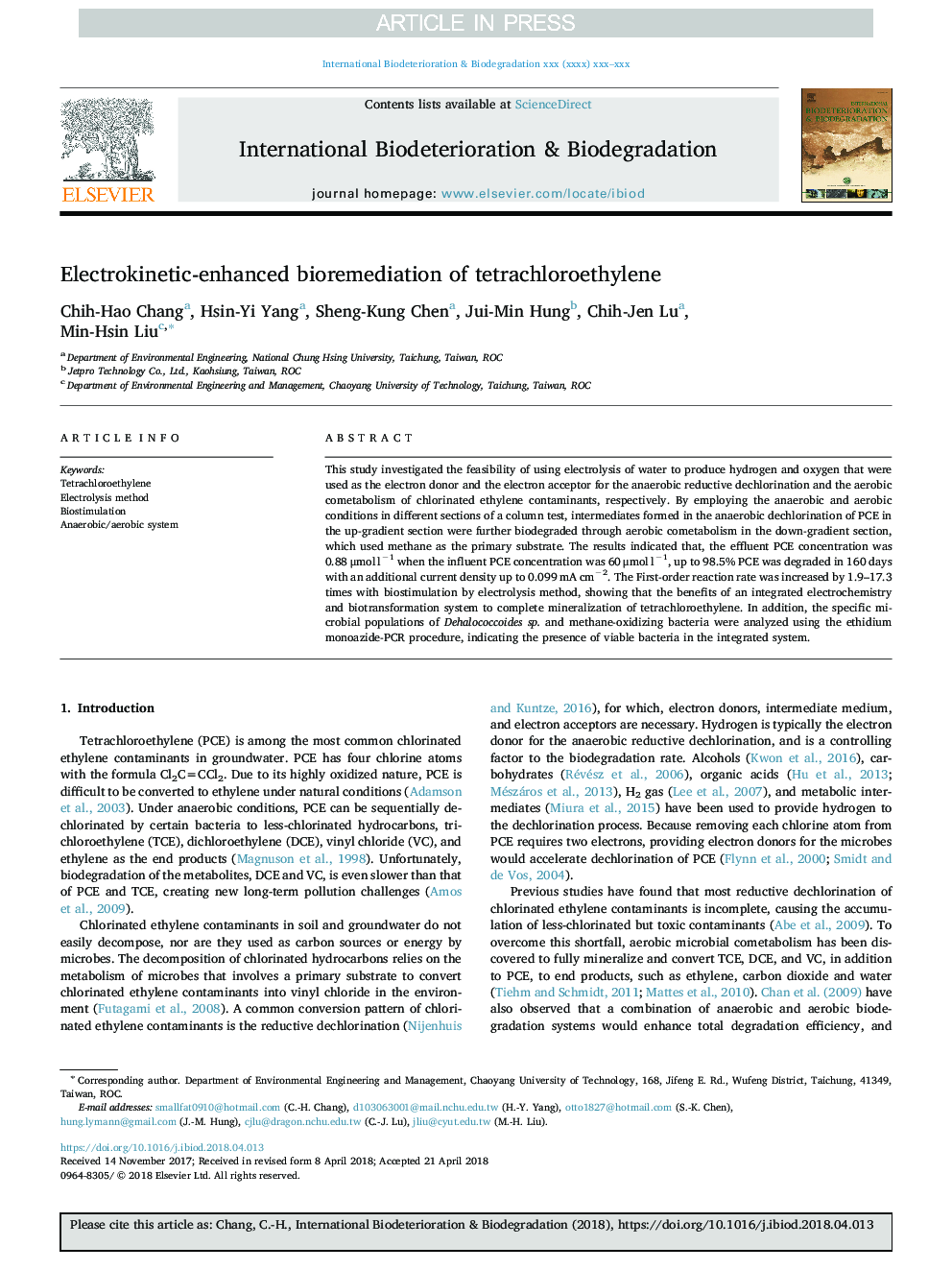| Article ID | Journal | Published Year | Pages | File Type |
|---|---|---|---|---|
| 8843776 | International Biodeterioration & Biodegradation | 2018 | 8 Pages |
Abstract
This study investigated the feasibility of using electrolysis of water to produce hydrogen and oxygen that were used as the electron donor and the electron acceptor for the anaerobic reductive dechlorination and the aerobic cometabolism of chlorinated ethylene contaminants, respectively. By employing the anaerobic and aerobic conditions in different sections of a column test, intermediates formed in the anaerobic dechlorination of PCE in the up-gradient section were further biodegraded through aerobic cometabolism in the down-gradient section, which used methane as the primary substrate. The results indicated that, the effluent PCE concentration was 0.88â¯Î¼molâ¯lâ1 when the influent PCE concentration was 60â¯Î¼molâ¯lâ1, up to 98.5% PCE was degraded in 160 days with an additional current density up to 0.099â¯mAâ¯cmâ2. The First-order reaction rate was increased by 1.9-17.3 times with biostimulation by electrolysis method, showing that the benefits of an integrated electrochemistry and biotransformation system to complete mineralization of tetrachloroethylene. In addition, the specific microbial populations of Dehalococcoides sp. and methane-oxidizing bacteria were analyzed using the ethidium monoazide-PCR procedure, indicating the presence of viable bacteria in the integrated system.
Related Topics
Life Sciences
Environmental Science
Environmental Science (General)
Authors
Chih-Hao Chang, Hsin-Yi Yang, Sheng-Kung Chen, Jui-Min Hung, Chih-Jen Lu, Min-Hsin Liu,
